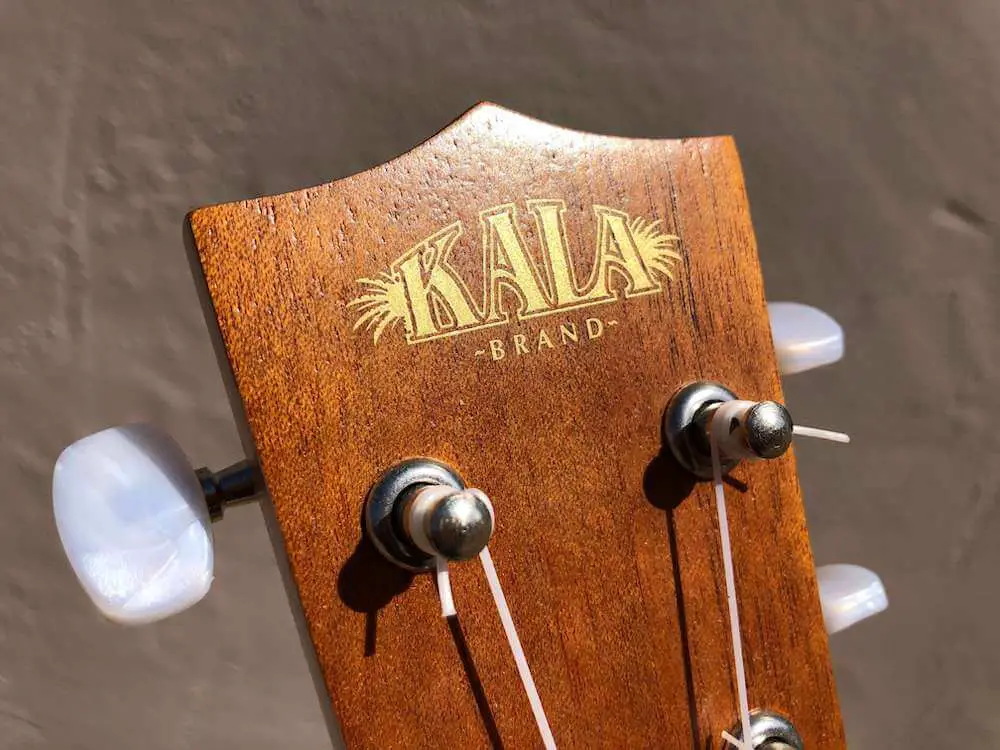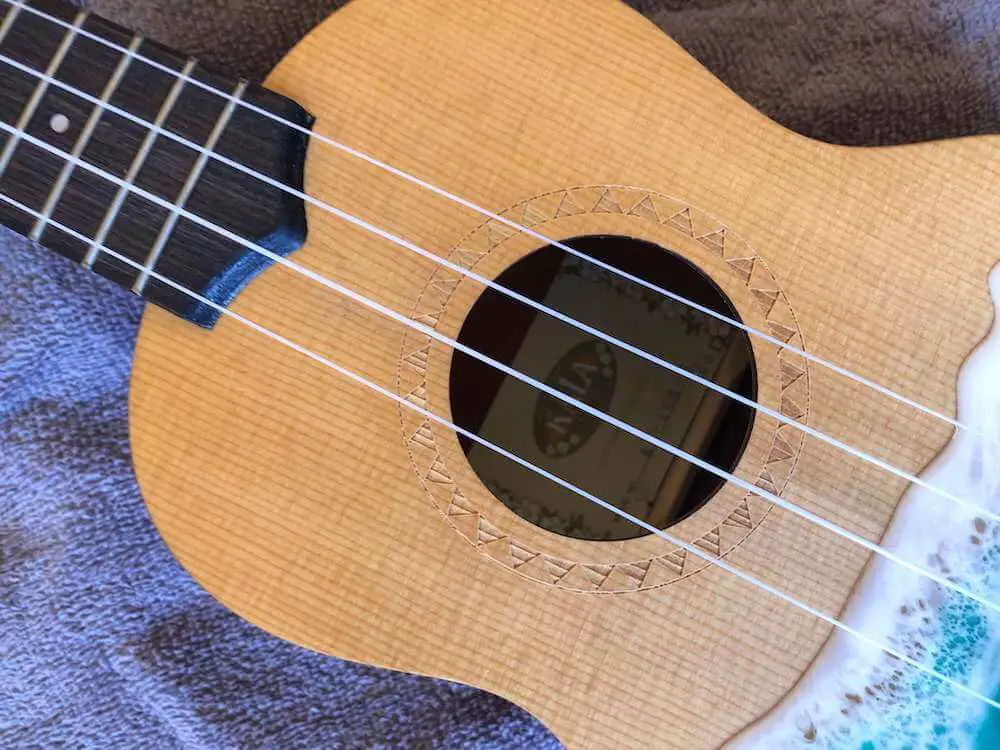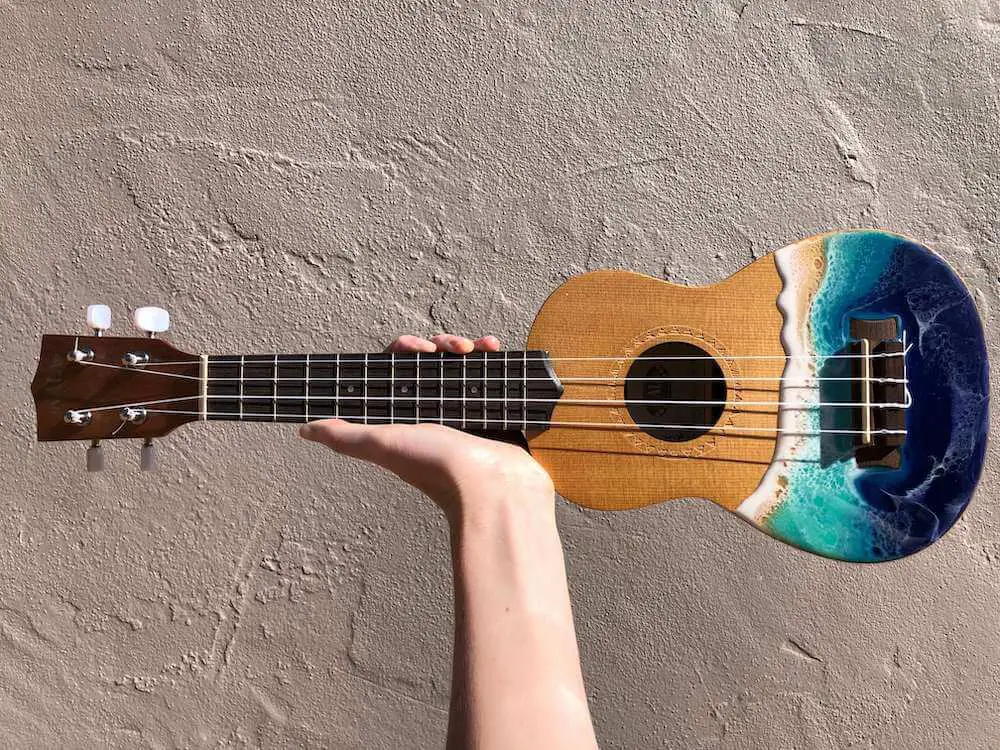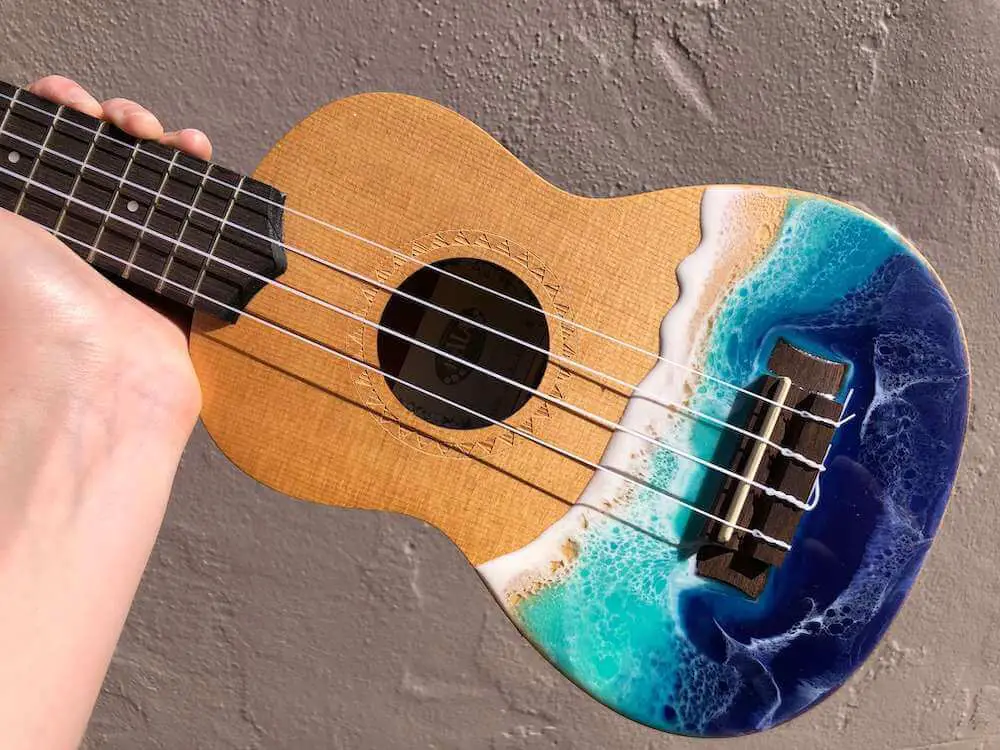Today I’m going to do a deep dive into the world of Kala ukuleles to answer whether they are a good brand.
I personally own a Kala 15 Series soprano ukulele and I couldn’t be happier with its tone, construction, and playability. Keep reading and I’ll tell you all about it!
First, let’s start with a quick summary.
Kala is a great ukulele brand. Despite being relatively new, Kala has become a leader in creating affordable but well-built instruments at a variety of price points. Kala has a good reputation in the ukulele community and offers some of the best starter ukes on the market, including the Makala line and 15 Series.
Don’t worry, I’ll go into more detail on all of this! Read on and I’ll break down Kala’s reputation, build quality, and manufacturing process. Then I’ll tell you a little more about some of their popular ukulele lines.
Let’s get started!
Kala’s Brand Reputation

Former Hohner musical instrument warehouse employee and Kala founder Mike Upton’s 2005 dream of creating affordable but quality ukuleles has officially been realized – Kala is now considered one of the most popular ukulele brands on the market.
Although the brand is relatively new at only 17 years old, Kala has already built an excellent reputation in the ukulele community.
From the budget Makala line to their higher-end solid wood ukes, its pretty easy to find positive feedback about Kala ukuleles. Beginner and professional players alike have nothing but kind words to say about the Kala brand – they simply sound great without breaking the bank.
Where Kala Ukuleles Are Manufactured
All Kala ukuleles are designed by members of the Kala team based out of Petaluma in Northern California. However, according to Kala themselves, the majority of their ukes are manufactured overseas in China, Indonesia, Portugal, Vietnam, and India.
The high-end Kala Elite USA and U-Bass models, on the other hand, are fully designed and assembled from start to finish at the brand’s factory headquarters in Petaluma, California.
Are Kala Ukuleles Hand-Made (Or Mass Produced)?
The majority of Kala ukuleles are what you would consider mass-produced. They are designed by Kala to meet certain specifications and quality points but are assembled overseas at various factories, ensuring a high volume of production. This is done to meet demands, which are now quite high for Kala ukes.
However, every ukulele in the Kala Elite USA line is hand-made. Starting with the selection of the solid tonewood and all body components, Elite ukes are constructed by an individual on a small scale.
Kala’s Build Quality (Compared to Other Brands)
Kala ukuleles feature good construction even on their lower-end models, which is rare in the world of inexpensive ukuleles. Compared to other common entry-level brands like Amahi and Mahalo, Kala’s build quality excels.
Certain issues have become expected in cheap ukuleles. Some fret ends will be sharp, the volume output will likely be low due to the shortcomings of laminate tops and heavy finishes, there will be globs of glue visible on the internal bracing, and tuners will frequently slip, making tuning a challenge.

Starter Kala ukuleles, though still made in China and costing less than $70, consistently have none of these issues. They may not be perfect – there will still be some visible glue on the inside of the body – but when it comes to sound and playability, all the right corners have been cut and none of the wrong ones.
When I play my Amahi uke, which cost easily three times what I paid for my Kala, I am astonished at how dead and muffled it sounds by comparison. It also has many sharp fret ends.
Hands-On with a Kala Ukulele

I own a Kala 15 Series soprano ukulele. This is the company’s flagship model – and for good reason. It is known as the “entry-level staple” on Kala’s website and I couldn’t agree more. Whenever someone mentions wanting to learn the ukulele, I am quick to suggest this model.
The Kala 15 soprano is a steal at only $69. It is well-constructed with smooth fret ends and reliable tuning pegs. The satin finish ensures that the uke can still project well, even though it has a laminate top like most entry-level ukuleles.
The all-mahogany build gives it a smooth, well-balanced tone despite its small size and also makes for a subtly attractive instrument.
Listen to Austin Bazaar’s demo of the Kala 15S soprano ukulele:
Where other brands drown their low-end ukuleles in flashy colors and thick finishes, the Kala 15 Series uke features just the right amount of flair with a pattern of small engraved triangles around the rosette that make the soundhole look like a sun.
This is not to say it’s the world’s best soprano ukulele. It’s not an all-solid Hawaiian Koa wood one-of-a-kind masterpiece hand-crafted by a local artisan on Kauai – but then again it’s not priced like one either!
This ukulele is a favorite in my arsenal and I call it Ol’ Reliable because it consistently provides that perfect, mellow soprano ukulele sound. It plays far better than comparably priced (and even a few of the more expensive) starter ukes.
What’s the Difference Between Kala and Makala Ukuleles?
Makala is the Kala brand’s budget line. The main difference between a Makala ukulele and a Kala ukulele is the price. Makalas range from $69 to $100 while other Kala lines range from $69 to $460 (and on up to $1,500 if you want the brand’s highest-end uke).
Makala ukuleles still are well received by buyers and are a good affordable choice. They are comparable to lower-end Kalas, like the 15 Series, but are constructed using cheaper parts like plastic nuts instead of those made from Graph Tech NuBone.
The Makala line includes the very popular dolphin and shark ukuleles which appeal to kids and adults alike.
Who Should Buy a Kala? (Beginner, Intermediate, or Professional Players?)
When the brand started in 2005, its goal was to produce ukuleles that were affordable without sacrificing build quality. This made Kala ukes accessible to people of all skill levels who didn’t want to break the bank buying an expensive instrument – but didn’t want a plastic piece of junk either.
Beginners
The Kala brand is really geared primarily toward beginners. With that said, in terms of starter ukuleles, Kala is leagues above its competitors. A beginner wanting a decent instrument to learn on cannot go wrong with a Makala or a lower-end Kala like the 15 Series.

Intermediate Players
Intermediate players looking to level up have plenty to choose from as well. Kala offers solid top and all solid wood lines for $200 to $400, which are very reasonable prices for a well-built solid wood instrument. The solid top spruce model is an excellent value at only $199.
Professional Musicians
Even professionals find something to love in a Kala. The hand-crafted Elite USA series is available in solid Hawaiian Koa, Honduran Mahogany, and Sitka Spruce with prices ranging from $700 to $1,500. You won’t find select solid tonewoods at these prices anywhere else.
But it’s not just the price that is attractive. Musicians like Michael McDonald (of Steely Dan and the Doobie Brothers), Vance Joy, Twenty-One Pilots, mxmtoon, and Dodie all play Kala ukuleles for one reason: they are quality instruments.
Frequent Travelers
If you’re a frequent traveler, Kala offers the thin-bodied Travel series as well as the virtually indestructible plastic-bodied Waterman ukes.
Whether you need your ukulele to be space-efficient so you can stuff it into an overhead compartment on a plane or you are planning to play it while kayaking on the lake, Kala has you covered!
Collectors and Influencers
Players seeking a bit of flash will enjoy the brightly-colored Ukadelic series, the geometric retro patterned Surf series, and the glittery Sparkle line. These ukes are conversation starters that look great on stage, in photos, or on your Instagram page!
Ukulele collectors searching for the unusual will also find plenty of options at Kala, like the fruit series, which features oval bodies ranging from watermelon to avocado, or the bug series, which comes in ladybug, blue beetle, and honeybee.
Players Seeking a Different Sound
If you’re looking to branch out from the classic “aloha” ukulele sound, Kala also makes a banjo ukulele, a resonator ukulele, and their very own Kala U-Bass.
I guess what I’m trying to say is everyone should buy a Kala!